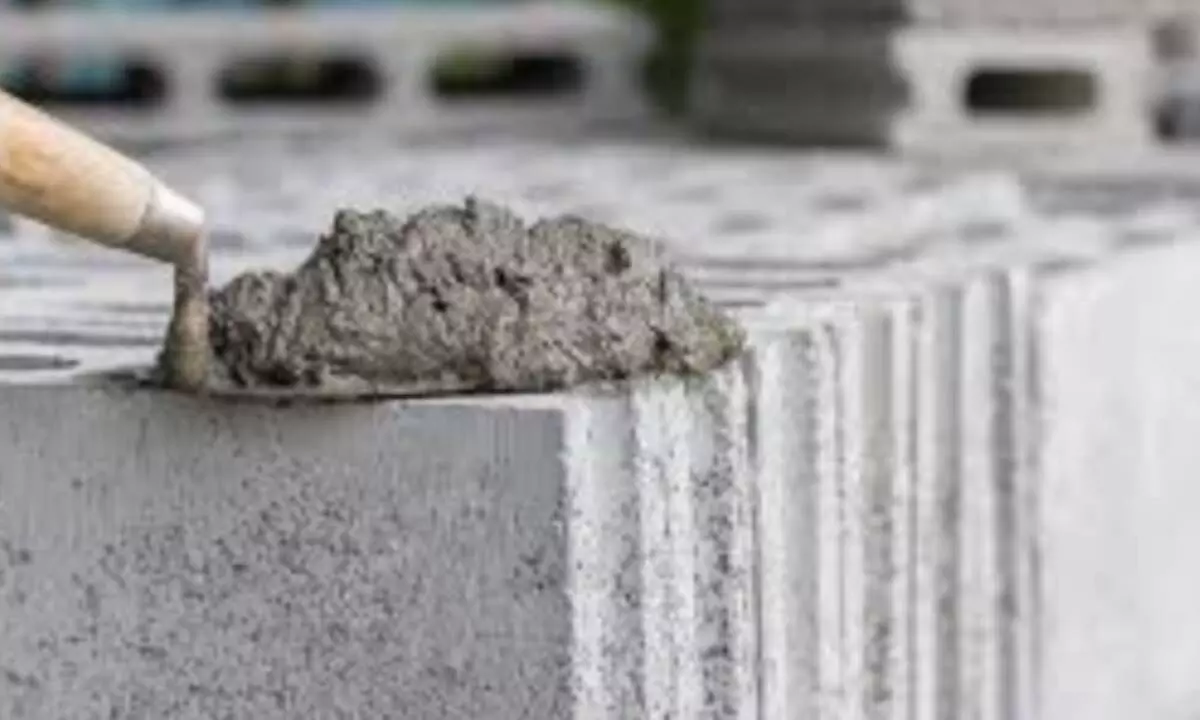Surge in margins spells good days ahead for cement industry
The biggest positive factors in the given circumstances that are brightening things for the country’s cement industry is its demand outlook which is being driven by the government’s push for infrastructure development, increasing demand in the housing sector, increased consolidation in the industry, cost-efficiency measures like installation of green power plants, raising AFR and blended cement share and focus on putting a premium on products. The demand for cement in India is expected to continue growing at a double-digit YoY rate in Apr-May 2023, backed by governmental infrastructure development and rising private capex and real estate boom. With these positives, top cement companies expect volumes to increase nearly 10-20 per cent YoY in FY24.The demand remains strong and volumes are estimated to grow in double digits YoY in Apr-May’23.
image for illustrative purpose

The biggest positive factors in the given circumstances that are brightening things for the country’s cement industry is its demand outlook which is being driven by the government’s push for infrastructure development, increasing demand in the housing sector, increased consolidation in the industry, cost-efficiency measures like installation of green power plants, raising AFR and blended cement share and focus on putting a premium on products. The demand for cement in India is expected to continue growing at a double-digit YoY rate in Apr-May 2023, backed by governmental infrastructure development and rising private capex and real estate boom. With these positives, top cement companies expect volumes to increase nearly 10-20 per cent YoY in FY24.The demand remains strong and volumes are estimated to grow in double digits YoY in Apr-May’23.
Quite significantly, leading cement companies do not expect downside pressure on prices because of the rising demand, and effective consolidation. Indications from recent earnings are that cement prices are likely to remain stable. Meanwhile, CRISIL MI&A Research expects cement demand growth to be strong at 8-10 per cent on-year this fiscal, which is also the pre-election year. This, however, will not propel prices up. On the contrary, prices are set to decline by nearly two per cent on-year to Rs 382-385 per bag, pulled lower also by relatively moderate growth in the trade segment. If another and separate study done by CRISIL MI&A Research is a pointer then cement prices are expected to slip 1-3 per cent this fiscal, after clocking a four per cent compound annual growth rate (CAGR) over the past four to a new all-time high of Rs 391 per 50 kg bag last fiscal. The run-up was due to disruptions caused by Covid-19, followed by a sharp surge in input costs, especially thermal coal, which was further aggravated by the Russia-Ukraine war.
Interestingly, prices have moderated since this year on the back of a gradual softening of energy costs and efforts of manufacturers to gain a market share in a seasonally strong fourth quarter. Prices had fallen by nearly one per cent to Rs 388 per bag on average in the fourth quarter of the previous fiscal sequentially, despite manufacturers carrying high-cost inventory. On an-on-year basis, though, prices have remained elevated. The scenario on the input front also favours lower prices. Australian coal prices, for one, declined in the third and fourth quarters (nearly 10 per cent and 36 per cent on-quarter, respectively) of fiscal 2023 after hitting multi-year highs in August and September 2022. Overall, the cement sector will likely see good days ahead as the companies are expected to see improvement in their margins. During FY22 and 23, the cement companies' margins and profitability were impacted by increasing raw materials. Due to lesser demand, the companies could not pass on the raw material costs to customers. In FY23, the companies' expenses jumped 55 per cent, opine sector analysts.

